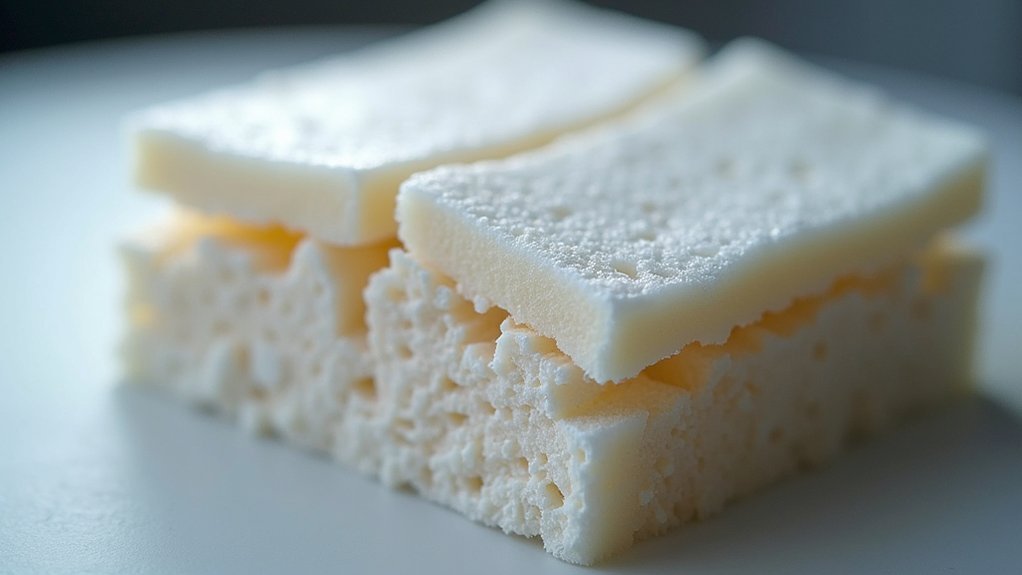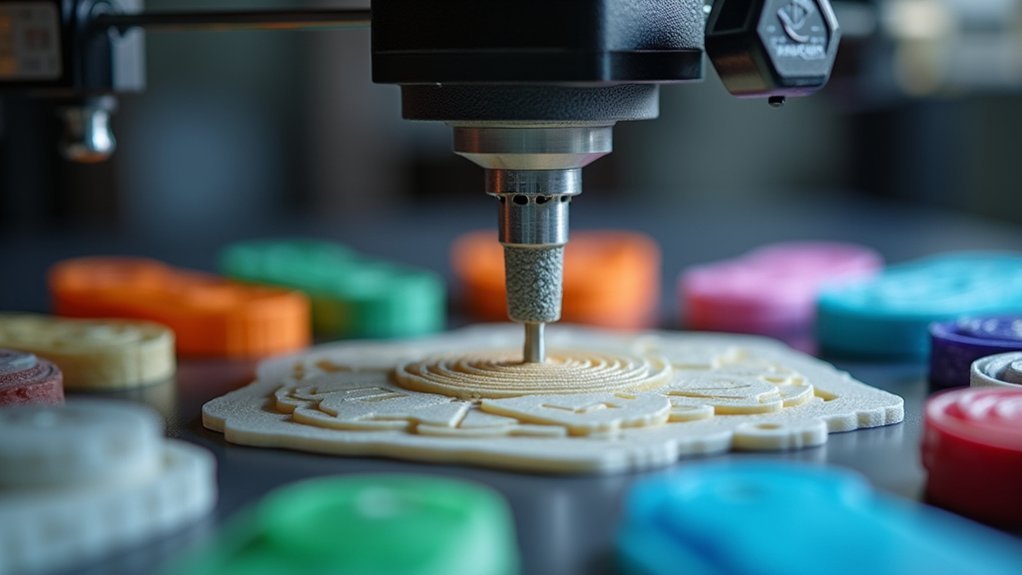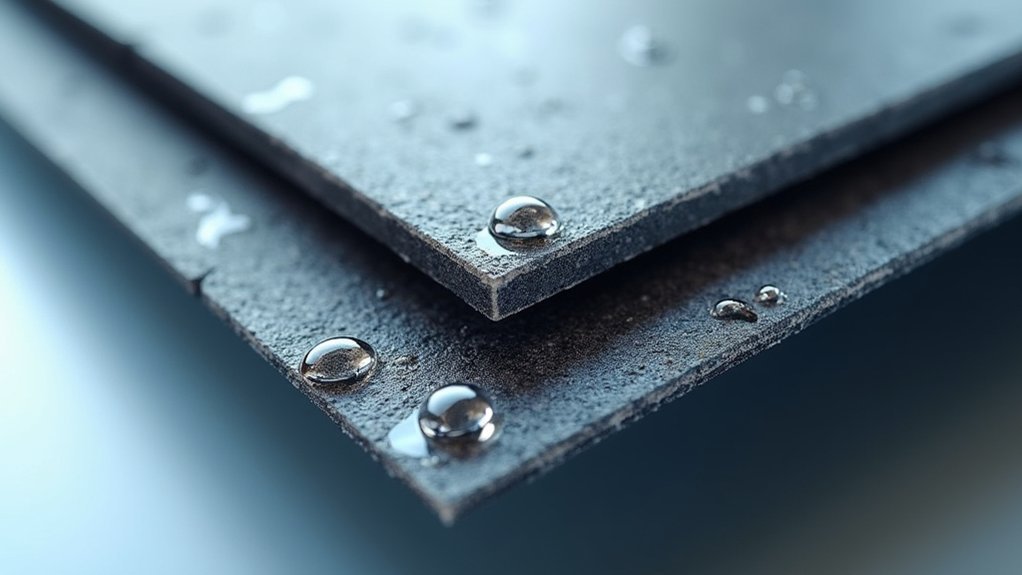You can solve layer adhesion problems by adjusting your print temperature to 210°C for PLA or 220-250°C for ABS, reducing print speed to 50-60 mm/s, and maintaining a stable environment without drafts. Check your nozzle for clogs, calibrate flow rate between 90-110%, and guarantee proper bed leveling with temperatures at 60°C for PLA or 70-90°C for ABS. These fundamental adjustments will dramatically improve your print quality and consistency.
Understanding Layer Separation and Delamination Causes

When 3D printing layers fail to bond properly, you’ll notice visible cracks, splits, or peeling that signals delamination has occurred. This layer separation compromises your print’s structural integrity and creates weak points that’ll cause failures.
Several factors cause poor layer adhesion. Incorrect printing temperatures lead to under-extrusion, preventing proper bonding between layers. Your layer height settings also matter—too thick layers won’t bond effectively.
Poor layer adhesion stems from incorrect temperatures causing under-extrusion and overly thick layer heights preventing effective bonding.
Rapid cooling from excessive cooling fan speeds or environmental factors like drafts can prevent layers from fusing correctly. High humidity affects filament quality, while inconsistent temperatures create expansion and contraction cycles that weaken bonds.
Understanding these delamination causes helps you identify whether you’re dealing with layer separation issues or first layer adhesion problems, since each requires different solutions.
Optimizing Print Temperature and Speed Settings
Since temperature directly controls how well your filament melts and bonds between layers, you’ll need to dial in the right heat settings for perfect adhesion.
Start with 210°C for PLA and 220-250°C for ABS, making incremental 5-10 degree adjustments if layer adhesion problems persist. Your print speed matters equally—reduce it to 50-60 mm/s to improve first layer adhesion and overall bonding.
Fine-tune your print settings by enhancing flow rates and layer heights, typically 0.2mm for most applications.
Adjust cooling settings by reducing fan speeds or using an enclosed chamber to prevent rapid cooling. High-quality filament performs better with proper nozzle diameter matching.
When adjusting print temperature, monitor how these changes affect layer consistency throughout your entire print for best results.
Nozzle Maintenance and Flow Rate Calibration

Even with perfect temperature and speed settings, a clogged or poorly maintained nozzle will sabotage your layer adhesion efforts. Proper nozzle maintenance is essential for achieving consistent filament flow and peak print quality.
Clean your nozzle regularly using fine needles or specialized cleaning filament to prevent clogs that cause under-extrusion and poor layer bonding.
When cleaning fails, perform cold pulls to remove stubborn residual material. If problems persist, replace the nozzle entirely.
Calibrate your flow rate through the extrusion multiplier in your printing settings, typically between 90-110%. Measure filament diameter with calipers since variations directly impact extrusion consistency.
These maintenance practices guarantee reliable material delivery, preventing layer adhesion issues caused by inconsistent flow rates and maintaining superior print quality throughout your projects.
Environmental Controls and Printer Setup
Three critical environmental factors determine whether your layers will bond properly or fail catastrophically: temperature stability, bed leveling precision, and ambient conditions.
Install an enclosure to maintain a stable temperature environment, preventing layer separation in ABS and temperature-sensitive materials. Your printer nozzles need consistent heat distribution to help filament to melt uniformly.
Achieve precise bed leveling using digital calipers to measure nozzle-to-print bed distances accurately. This guarantees ideal first layer adhesion.
Set your bed temperature to 60°C for PLA and 70-90°C for ABS to prevent warping.
Environmental controls include adjusting print speeds to 20-30 mm/s for first layers, allowing better bonding time.
Regular maintenance keeps your build plate contaminant-free, guaranteeing consistent adhesion quality and preventing catastrophic print failures.
Material-Specific Adhesion Strategies

Beyond establishing the right environmental conditions, each filament type demands specific temperature and cooling strategies to achieve strong layer bonds.
PLA requires 200-210°C extrusion temperatures with moderate cooling to prevent weak adhesion while maintaining dimensional accuracy.
ABS needs higher temperatures (220-250°C) and minimal cooling to help layers bond properly and avoid layer separation.
PETG’s temperature range of 220-250°C with reduced cooling prevents stringing while ensuring first layers adhere well.
Nylon demands extreme heat (250-265°C) and controlled environments to improve layer strength.
TPU requires slower print speeds (20-30mm/s) at 210-230°C for consistent adhesion.
Proper storage and handling of each material preserves its bonding properties, preventing moisture-related adhesion issues that compromise print quality.
Frequently Asked Questions
How to Fix Layer Adhesion?
Increase your print temperature to 210°C for PLA or 220-250°C for ABS. Clean your nozzle regularly, reduce speed to 50-60 mm/s, and optimize layer height to 25% below nozzle diameter.
Does a Hotter Bed Make PLA Stick Better?
Yes, you’ll get better PLA adhesion with a hotter bed around 60-70°C. It keeps your first layer sticky and prevents warping, but don’t exceed 80°C or you’ll damage print quality.
How to Improve Abs Layer Adhesion?
You’ll improve ABS layer adhesion by printing at 220-250°C, using an enclosure, slowing speeds to 50-60 mm/s, heating your bed to 70°C, and adding brims for better first-layer contact.
How to Fix Poor Bed Adhesion?
You’ll fix poor bed adhesion by cleaning your build plate with isopropyl alcohol, leveling your bed properly, setting correct temperatures, and using brims or adhesion aids like glue sticks.





Leave a Reply